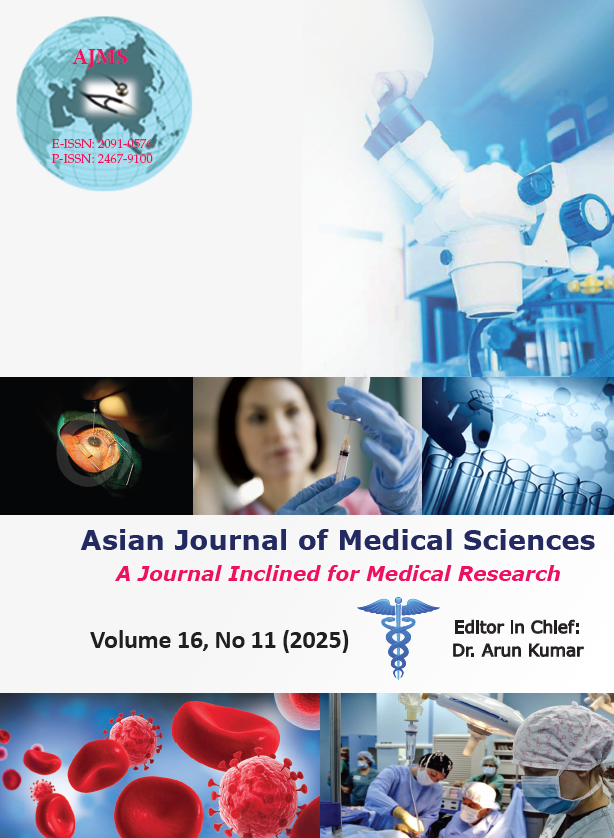Point-of-care ultrasound in acute kidney injury: A single-center study
DOI:
https://doi.org/10.71152/ajms.v16i11.4842Keywords:
Acute kidney injury; Echogenicity; Inferior vena cava diameter; Point-of-care ultrasound; Ultrasound (USG); Volume statusAbstract
Background: Acute kidney injury (AKI) is a serious condition with a high mortality rate, necessitating prompt radiological assessment for effective management. Delays in radiologist evaluation can impede the initiation of treatment. Nephrologists are increasingly utilizing point-of-care ultrasound (POCUS) for bedside evaluations, expediting treatment decisions. POCUS enhances physical examinations and is valuable in nephrology for guiding procedures and diagnosing kidney disease.
Aims and Objectives: This study aimed to use POCUS to assess kidney echogenicity, size in various AKI causes, post-renal obstructions, volume status through the inferior vena cava (IVC), and lung ultrasonography (USG) findings and to compare these findings with clinical assessments.
Materials and Methods: In this prospective observational study, 50 patients with AKI were clinically categorized upon admission into euvolemic, hypervolemic, or hypovolemic groups based on physical examination. POCUS was used to assess renal cortical echogenicity, bladder outlet obstruction, and volume status using IVC size and lung USG. Correlations between clinical and POCUS-assessed volume status were compared. Results: The mean age was 48.8 years, with 64% male (n=32). POCUS revealed increased renal echogenicity in three patients (6%) and obstructive nephropathy in six patients (12%). Clinical assessments correlated with POCUS findings in 69.2% of euvolemic, 93.3% of hypervolemic, and 88.9% of hypovolemic patients (P<0.0001).
Conclusion: The strong correlation between POCUS findings and clinical assessments underscores its reliability as a rapid, non-invasive tool for evaluating volume status in patients with AKI, supporting treatment decisions such as dialysis and hydration.
Downloads
Downloads
Published
How to Cite
Issue
Section
License
Copyright (c) 2025 Asian Journal of Medical Sciences

This work is licensed under a Creative Commons Attribution-NonCommercial-NoDerivatives 4.0 International License.
Authors who publish with this journal agree to the following terms:
- The journal holds copyright and publishes the work under a Creative Commons CC-BY-NC license that permits use, distribution and reprduction in any medium, provided the original work is properly cited and is not used for commercial purposes. The journal should be recognised as the original publisher of this work.
- Authors are able to enter into separate, additional contractual arrangements for the non-exclusive distribution of the journal's published version of the work (e.g., post it to an institutional repository or publish it in a book), with an acknowledgement of its initial publication in this journal.
- Authors are permitted and encouraged to post their work online (e.g., in institutional repositories or on their website) prior to and during the submission process, as it can lead to productive exchanges, as well as earlier and greater citation of published work (See The Effect of Open Access).





